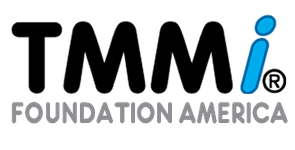TMMi is the test improvement and maturity model used by organizations to improve their test processes within any lifecyle such as traditional, agile, lean or devops, etc. and to compare their maturity against. Implementing the recommendations of the assessment enables organizations to derive many benefits and advantages, particularly around higher return on investment, higher defect detection, better predictability, higher quality, higher client satisfaction and more…
TMMi expects some documentation but it doesn´t prescribe the form and level of detail. The documentation expected depends on method used, business domain, etc.
A very large number of TMMi assessments have been conducted worldwide. Examples of improvements reported, include the following:
- 40% savings made after changes made to ensure certification to TMMi Level 3, for a government department
- A bank saved 8% of their entire IT budget and improved development output by 12%
- An insurance company reported a saving of £440,000 on a £2m project
- A retailer saves at least 12% on every project after the improvements were deployed
- A test services company increased their test efficiency by 8%
- An embedded software company improved their defect detection rate from 78% to 96% during a 4 year period moving from maturity level 1 to 3.
Agile approaches and TMMi can not only co-exist, but when successfully integrated will bring substantial benefits. There is also a challenge of looking at testing differently, being fully integrated within Agile development and what that means in the context of a “test” improvement programme. Note that the “i” of TMMi refers to the fact that testing should be an integrated part of software development, and not be treated as something that is totally separate.
There are two authorized types of Assessment Methods, described as Formal and Informal. A Formal Assessment has a sufficient degree of rigor and corroboration which can result in a formal capability rating against the TMMi Reference Model. An Informal assessment does not require any corroboration of sources and will not result in a formal capability rating against the TMMi Model.
